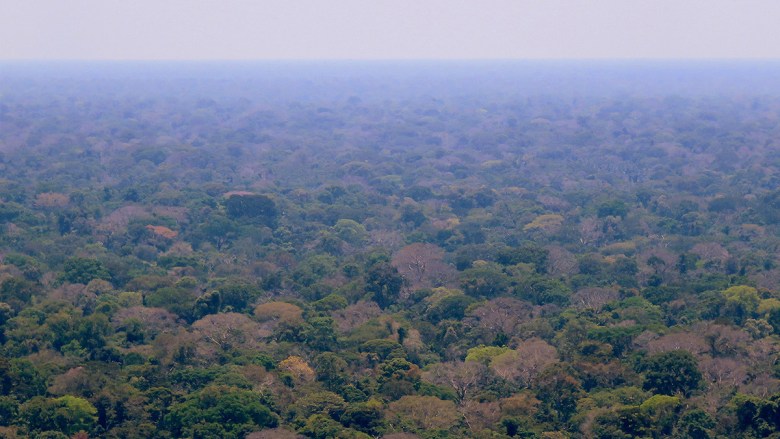
Source: AGU Advances
The 2015–2016 El Niño hit the Amazon basin hard, causing a drought that severely reduced aboveground vegetation and caused the basin to release nearly 1 gigaton of carbon into the atmosphere.
Liu et al. found that whereas it took more than a year for aboveground biomass to recover, the Amazon’s recovery from the total carbon loss, including belowground biomass and soil carbon, took even longer. In fact, total carbon stocks across the basin had still not returned to predrought levels by the end of 2018.
The study examined three distinct areas of the Amazon—the northeast, the tropical west-southwest rainforest, and the southeast dry savanna. The researchers used 9 years of monthly satellite data on gross primary production, fire emissions, and net biosphere exchange to examine how drought-induced atmospheric and soil dryness affected carbon fluxes.
They reported that the northeastern Amazon, the region hardest hit by the drought, still faced a cumulative loss of 0.6 gigaton of carbon by December 2018 as a result of the 2015–2016 El Niño. The deficit was mainly due to reduced photosynthesis (and accompanying carbon uptake) by water-stressed vegetation. In the southeastern savanna, carbon loss was partly driven by fire. And in the west-southwest, water loss may have impaired plants. It’s typical for carbon uptake to drop in response to atmospheric dryness and a lack of groundwater, but the researchers found that carbon uptake declined 3 times more than expected.
As drought persists in the Amazon, crucial carbon cycling processes may continue to be affected by soaring temperatures, arid conditions, and water storage deficits. Water supply and demand issues could, the team noted, transform the Amazon from a carbon sink to a carbon source. (AGU Advances, https://doi.org/10.1029/2024AV001187, 2024)
—Rebecca Owen (@beccapox), Science Writer
Citation: Owen, R. (2024), Amazonian drought may have long-lasting effects on carbon cycle, Eos, 105, https://doi.org/10.1029/2024EO240365. Published on 19 August 2024.
Text © 2024. AGU. CC BY-NC-ND 3.0Except where otherwise noted, images are subject to copyright. Any reuse without express permission from the copyright owner is prohibited.
Related
